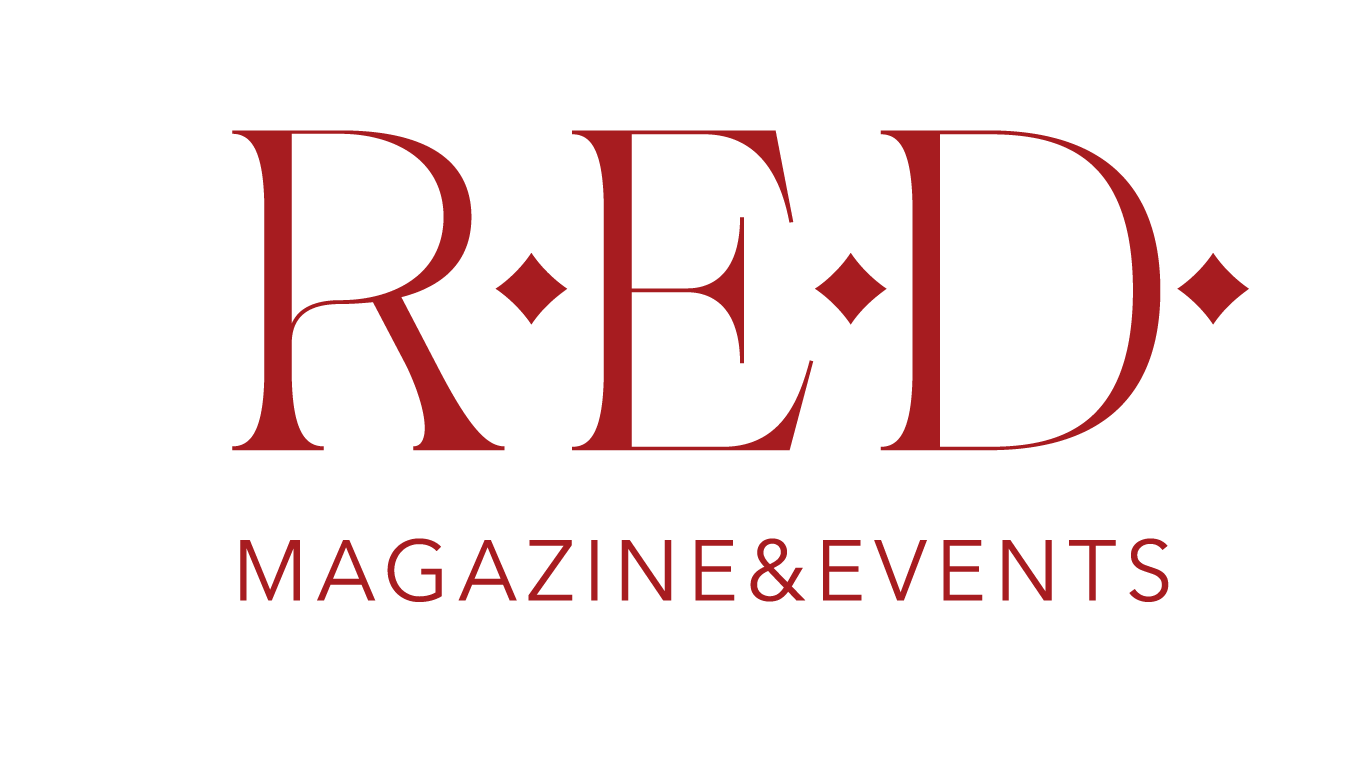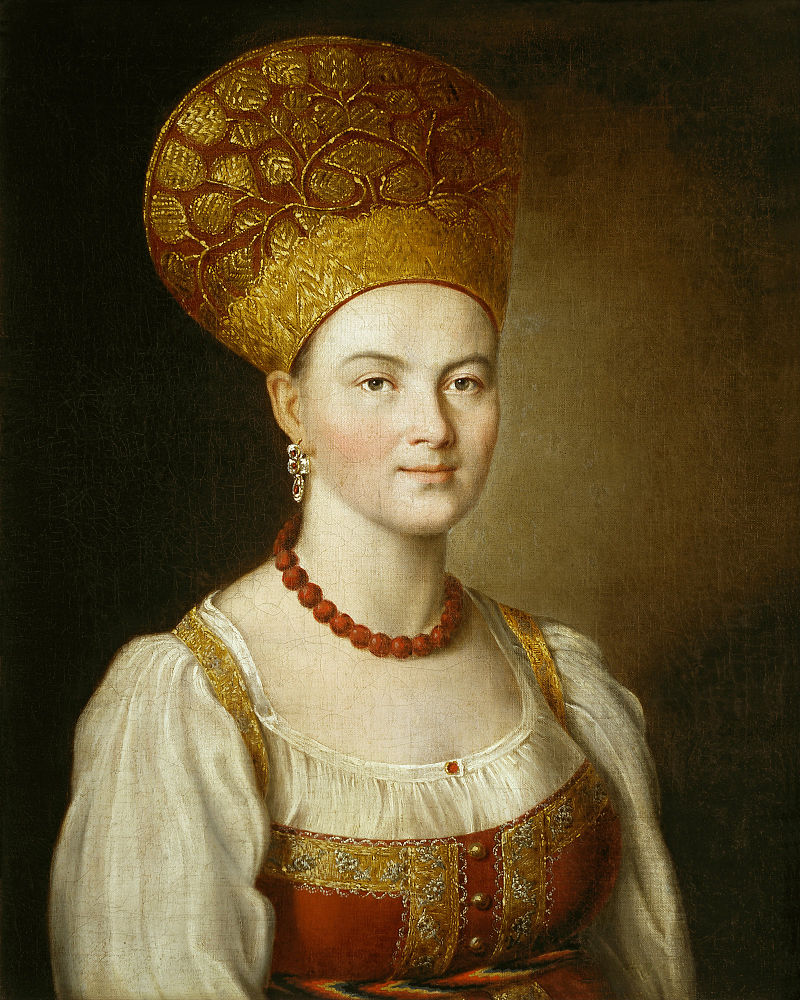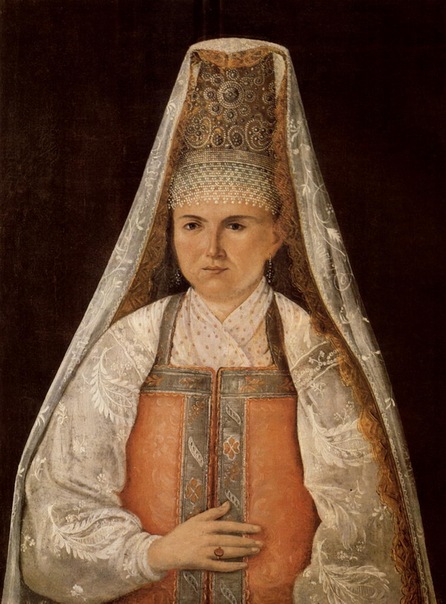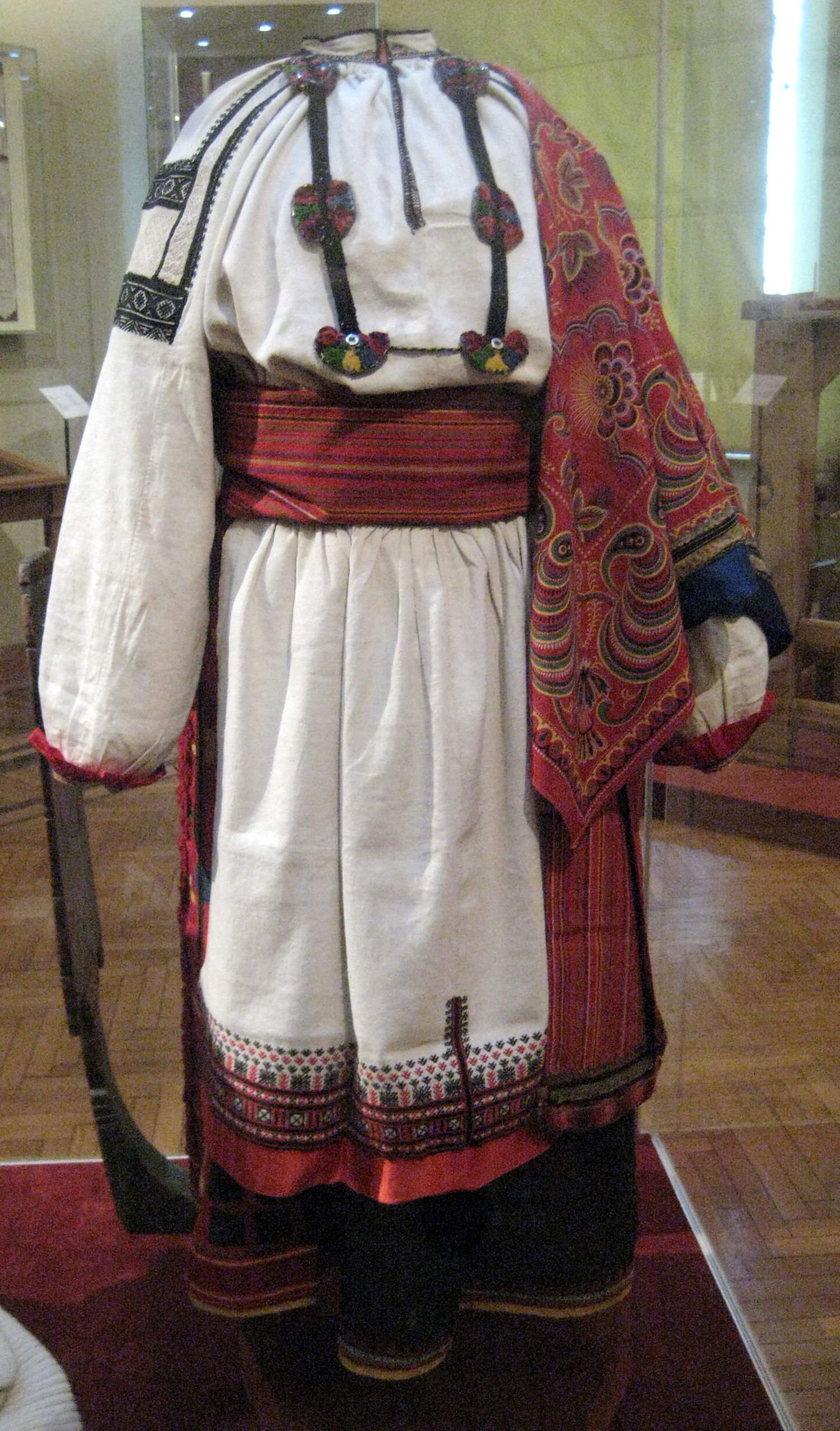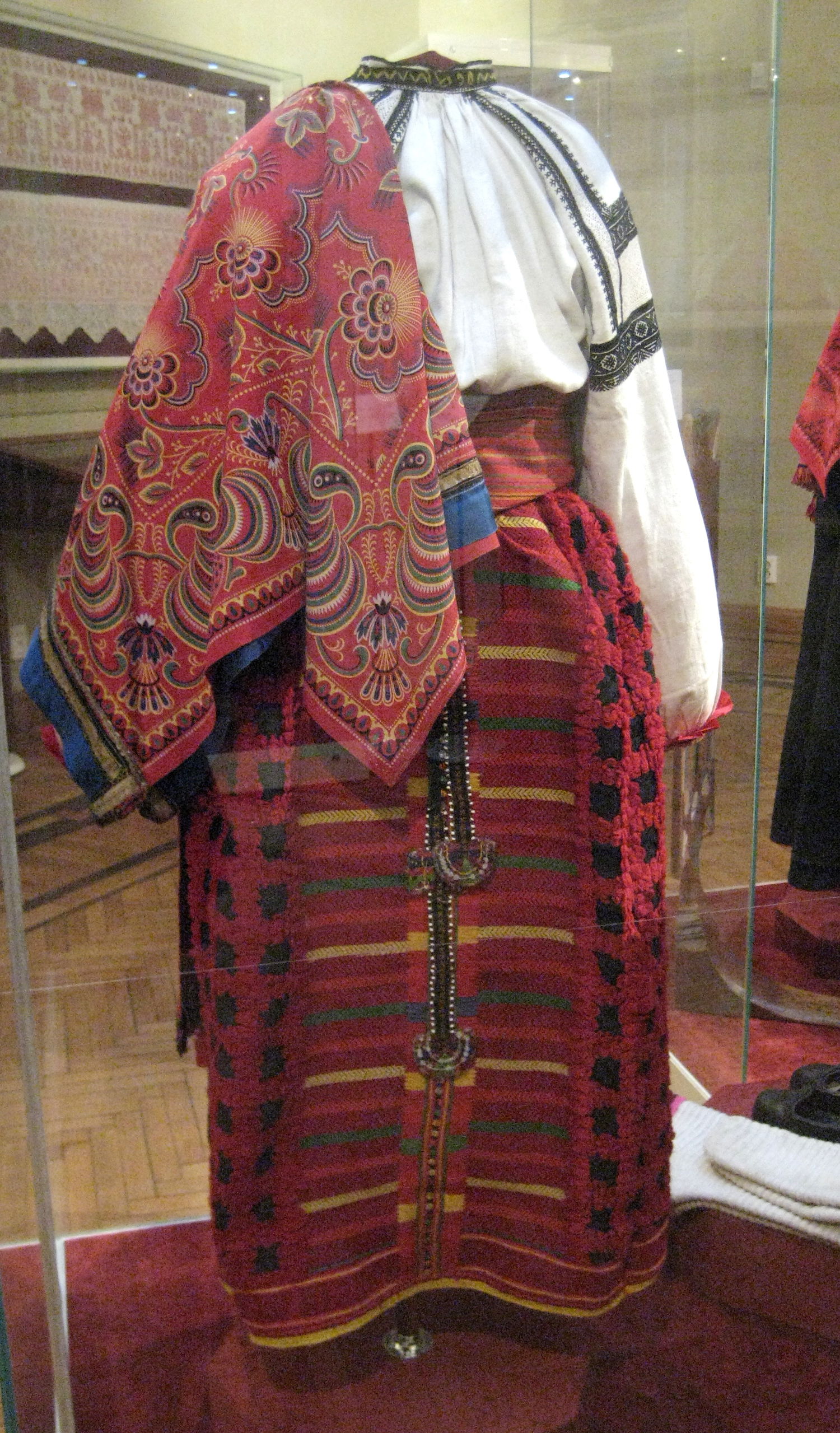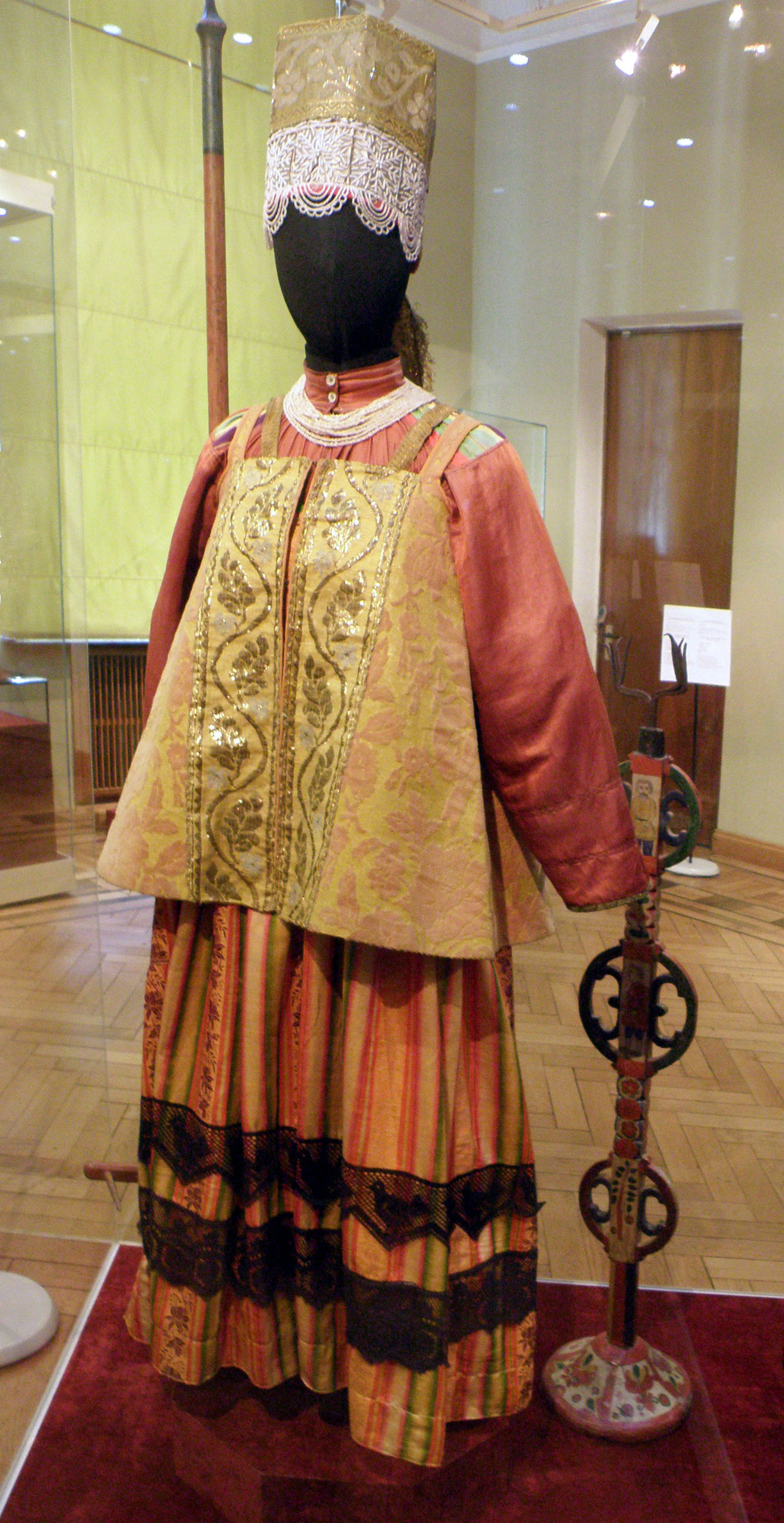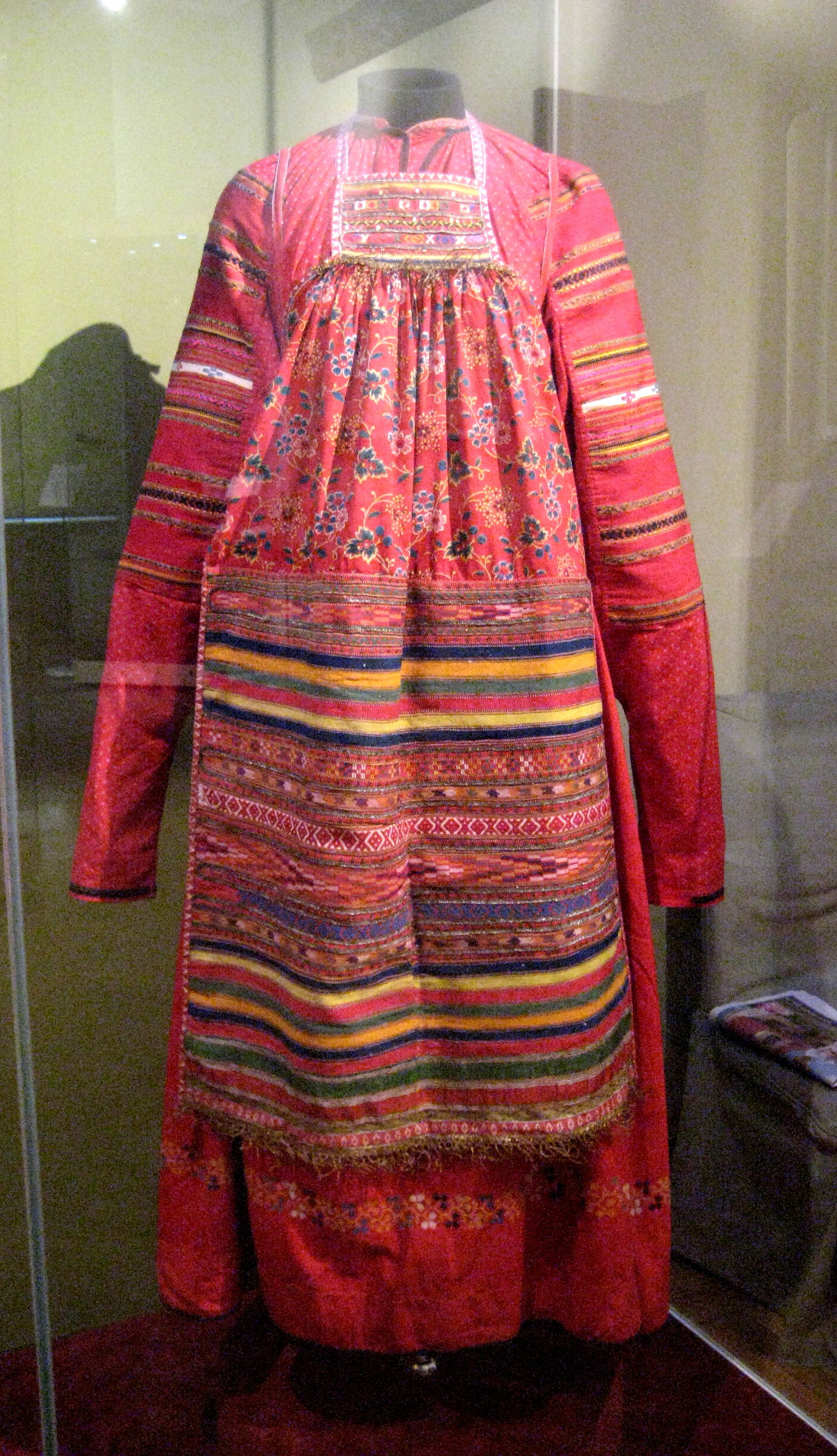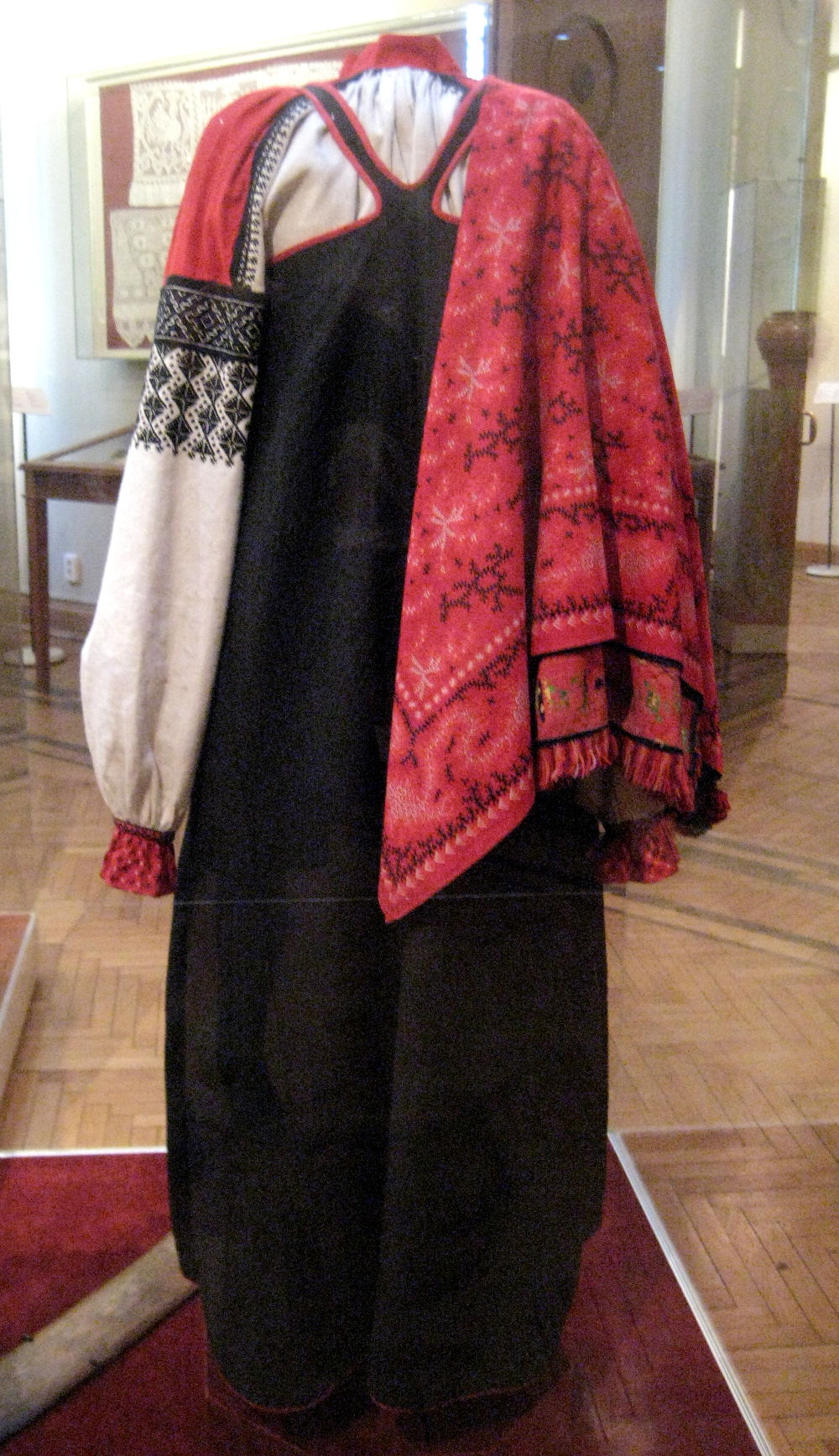Современная мода все чаще обращается к традиционным народным узорам, но мало кто знает, что в прежние времена орнамент вышивки служил своеобразной этнографической книгой, раскрывающей загадку происхождения, рода деятельности и социального статуса хозяина.
В последнее время стало популярным обращение к этническим мотивам русской культуры. В России исторические реконструкции привлекают внимание своим колоритом и профессионально сшитыми изделиями под старину. В интернете запросто можно найти около сотни школ традиционной росписи и вышивки, а также информацию о слетах и праздниках для любителей национального костюма. Архаичная одежда, которая, казалось бы, должна занимать почетное место в музеях, а не в гардеробах, обрела второе дыхание в XXI веке.
Шутка ли писать о своих корнях и историческом наследии, находясь за тысячи километров от географического места рождения? Да и зачем? Кому в Австралии может пригодиться традиционный русский костюм с его двенадцатью юбками, понёвой, душегрейкой, кичкой, сорокой и епанечкой, и что из этих слов останется в памяти иммигрантов спустя четверть века?
А помните это:
«Пускай меня объявят старовером,
Но хуже для меня наш Север во сто крат
С тех пор, как отдал все в обмен на новый лад –
И нравы, и язык, и старину святую,
И величавую одежду на другую
По шутовскому образцу».
«Горе от ума», А. С. Грибоедов
В XIX веке А. С. Грибоедов вложил в уста Чацкого скорбь по традициям, оставшимся в прошлом, и к одежде это имело прямое отношение. Весь период до конца правления Рюриковичей национальное одеяние было принято повсеместно и всесословно. Образец русского платья – сарафан и рубаха – как считают историки, сложился к XII веку. Его носили и крестьяне, и бояре. У последних, разумеется, кафтан был расшит богаче и из более дорогой ткани, но фасон оставался общепринятым: многослойный подпоясанный чехол.
Пояс как раз считался очень важным элементом в костюме и наравне с нательным крестом служил символом веры. Поэтому, про иноверцев-татар на Руси говорили, «Ходит как татарин: без креста, без пояса». Благодаря этой поговорке понятно, что христианское вероисповедание сопровождают крест и пояс. А выражение «совсем распоясался» обретает более глубокий смысл и оттенок бесноватости. И действительно, чаще всего мы адресуем его непослушному ребенку, добавляя, «как бесенок».
Один элемент костюма мы разгадали. А что дальше?
А дальше, с приходом Петра, всем высшим сословиям запретили не только бороды, но и исконно русскую одежду носить. На крестьян эти правила не распространялись, и они продолжили облачаться в привычные длиннополые платья, что отложилось в историческом образе традиционного костюма как одежды крестьян. Одежда была своего рода этнографической книгой, прочитав которую, знающий человек мог определить происхождение, род деятельности, возраст и социальный статус другого.
Крой и узоры костюма различались не только по уездам, но дробились на более мелкие единицы – деревни и села, поэтому распознать свояка не составляло труда. Но такое «книгочтение» сохранилось до середины XIX века, когда считывать узоры и орнаменты учили бабки, собирая в избах молодежь. Утраченные знания восстанавливали искусствоведы и историки.
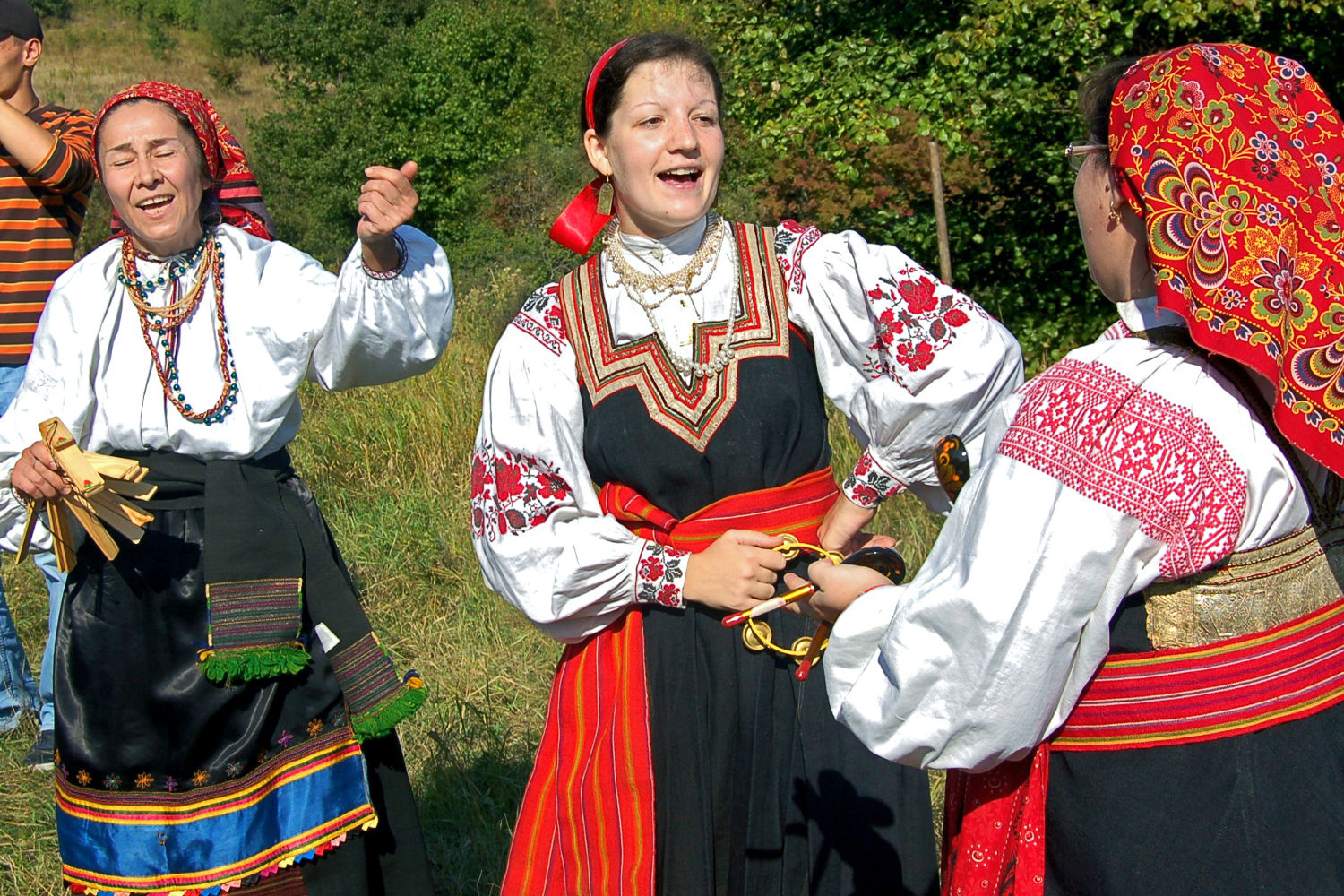
By Лобачев Владимир (Own work) [CC BY-SA 3.0 (http://creativecommons.org/licenses/by-sa/3.0)], via Wikimedia Commons
Историк-этнограф Б. А. Рыбаков отмечал, что южнорусский костюм представлял некую картину мироздания, где каждый ярус одежды, начиная с нижнего, был покрыт символами Вселенной:
«…Нижний, земной ярус одежды покрыт символами земли, семян и растительности, у верхнего края одежды мы видим птиц и олицетворение дождя, а на самом верху все это увенчано ясными и бесспорными символами неба: солнце, звезды, семь фигур, обозначающих созвездия, птицы, солнечные кони и т. д.»
О разнообразии орнаментов в русской вышивке написано немало, но особое внимание уделяется использованию ромбов и ярги (крючковатого креста, известного как свастика). В славянской культуре эти две фигуры символизировали плодородие. Исследователь русского костюма П. И. Кутенков связывает физиологический возраст женщины с орнаментом ее одежды: «Горизонтально расположенные ряды-ярги образуют своеобразный солнечно-космический календарь жизни». Исследователь рассказывает о периодах ношения понёвы: «Впервые понёву – добрую, красивую сряду об 11-ти яргах – молодая женщина надевала на свадьбу. С этого момента невеста становилась «бабой» и уже не снимала понёвы до конца своей жизни. В чадородный период женщина носила понёвы об одиннадцати, девяти, семи и пяти яргах».
Марии Буряковой, преподавателю по народному костюму и вышивке, повезло попасть к «живой истории» русский традиции, старенькой бабушке в русской глубинке, во время этнографической экспедиции с фольклорным коллективом «Дербеневка». С этой встречи и началось ее собственное творческое путешествие в мир народного костюма.
«Я увидела всю красоту костюма, крой, украшения. Мне стало очень интересно разобрать и понять, как это создавали мои предки. Потом, как-то само собой, мне захотелось носить длинные юбки, иметь свой костюм».
Посещая мастер-классы и курсы по истории костюма, собирая знания из разных школ и регионов, Мария вскоре смогла организовать собственные занятия, где рассказывает и учит ручному шитью традиционного костюма:
– По моей практике, костюм можно сшить за два месяца. Женский состоит из трех частей – рубахи, сарафана и фартука. Если не учитывать головные уборы, обувь и украшения, это будет тот минимум, который девушки успевают выполнить за восемь занятий. Если есть навык шитья, то все очень быстро схватывается.
Костюмы разнообразны, но в широком смысле их можно разделить на Северный и Южнорусский. Если провести горизонтальную линию на уровне Москвы, получится примерная граница этих школ. Северный – немного попроще, с рукавом в три четверти и фартуком от пояса. У южного есть верхняя часть фартука – красивая кокетка, которая делает южнорусский образ более закрытым. Я провожу мастер-классы по вышивке, где главное – освоить технику, а потом уже можно тренироваться дома.
В каждой деревне были приняты свои принципы вышивки. Представьте молодую девушку, берущую за образец костюм своей мамы или бабушки. Она старается повторить все завитки, но, как и в любом искусстве, художник добавляет что-то свое. Так и в вышивании – швея хотела что-то улучшить, сделать более современным, чтобы быть первой красавицей на деревне. Конечно, эти отступления не были настолько значительными, чтобы видоизменить костюм, но можно проследить появление новых орнаментов в пределах одного поселения.
Мария считает, что главными студентами на ее курсах являются молодые девушки, которые интересуются своими традициями и шьют для себя.
– В Москве, где я проводила курсы, становится более популярным обращение к этнографии. Есть клубы по интересам для любителей фольклора. Есть места досуга, куда можно пойти в народном костюме, например «Вечерки», где поют и исполняют народные танцы. Проводятся танцевальные флэш-мобы, приглашаются специалисты по народному творчеству, играм, песням. И народу интересно участвовать в подобных событиях. Я это называю генетической памятью, когда ты проникаешься культурой, заложенной в тебе предками, чувствуешь родство с землей и традицией и хочешь узнать побольше о своих корнях.
По мнению Марии, экспедиции, которые устраиваются этнографическими клубами в деревни и села, помогают молодежи узнать о своей культуре из первых уст.
Современная мода диктует стиль с использованием фольклорных и этнических мотивов. Дизайнеры создают образы, сочетая разные народные орнаменты, силуэты и украшения. Возможно, из-за этого страдает истинный образ народного костюма, но одновременно, исконная культура обращает на себя внимание молодежи, говоря на ее языке.
Некоторые идут еще дальше, постигая традиции и перенимая ручной опыт. Они создают новые тенденции забытого в советское время ретро-стиля. Это и называется преемственностью, которая, перескочив через три поколения истребления культурной памяти и однообразной одежды Советского Союза, нашла своих последователей в XXI веке.
Modern fashion is increasingly incorporating traditional folk patterns. But few people know that in ancient times, embroidered ornaments served as an ethnographic book that revealed the origin, occupation and social status of the owner.
Lately, ethnic folk dress has become a popular expression of the traditional Russian culture. In Russia, professionally sewn products in an ancient style draw attention. On the Internet, you can easily find hundreds of schools on traditional painting and embroidery as well as information about the gatherings and holidays for those that truly embrace the national costume. It is obvious that old-fashioned clothing, which would seem to have a rightful place in museums instead of wardrobes, has found a second wind in the 21st century.
Is it silly to write of your roots and historical heritage being thousands of miles away from your geographical place of birth? Who in Australia would appreciate a traditional poneva Russian costume with its twelve skirts, a warm vest (dushegreyka), headdress (kichka), soroka and epanechka? And which of these ancient words are still in the memory of those who have long since immigrated?
As the poet once said:
“Let them call me an Old Believer,
But what’s worse for me is our North a hundredfold
Since then, I gave everything in exchange for a new way
Manners, language, and ancient holy,
And our famous clothes for another.”
“Woe from Wit,” A. Griboyedov.
In the 19th century, Griboyedov put in Chatsky’s mouth sorrow for his traditions, which had a direct relationship to dress. For the whole period until the end of the reign of Rurik, traditional attire was commonplace. For example, according to historians, the sarafan dress and rubaha shirt, were formed at the start of the 12th century. Peasants and nobles wore it. The latter, of course, wore embroidered kaftans made from richer and more expensive fabrics, but kept the regular style: layered, with belted undergarments.
The belt was considered a very important element of the outfit and it was on par with the crucifix as a symbol of faith. Therefore, it was commonly said about Tatars (who were considered infidels): “He walks like a Tatar: without the cross, without the belt.” This saying clearly demonstrates that Christianity goes hand in hand with the cross and belt. And the phrase “sovsem raspoyasalsya” acquires a deeper meaning and a manic, demonic tone. And indeed, we often say these words to naughty children, adding, “like a little devil.”
So far, we’ve unravelled one element of the costume. What else is there?
Later, with the arrival of Peter the Great, the whole upper class was not only forbidden to have beards, but also to wear native Russian clothing. These rules did not apply to peasants and they continued to wear the ankle-long dresses. Therefore, historically, traditional dress associates with peasantry. The clothing became a kind of ethnographic book, which if read by a knowledgeable person, the origin, occupation, age and social status of a person could be determined.
The cut and costume patterns differed not only by country, but by villages and towns. Therefore, it was easy to recognise one’s own. These differences survived until the middle of the 19th century, when old women gathered youth in huts to teach them patterns and ornaments. Since then, historians have helped revive lost knowledge.
Historian and ethnographer Boris Rybakov noted that the Southern Russian outfit consisted of a picture of the universe, where each tier of clothing, starting from the bottom, was covered with symbols of the universe:
“… The lower layer, the earth tier, is covered by symbols of land, seeds and vegetation. At the upper edge of the clothing, we see birds and rain. And at the very top we see clear and undisputed symbols of the sky: the sun, the stars, seven figures indicating the constellations, birds, solar horses, etc.”
A lot is written about the variety of patterns in Russian embroidery. But there is a special emphasis on the use of diamond patterns and yargi (hooked crosses, also known as the swastika). In Slavic culture, these two figures symbolise fertility. Russian costume expert P.E. Kutenkov correlated the physiological age of a woman with her embroidery: “Horizontal series of yargahs form a specific solar cosmic calendar of life.”
The researcher talks about the poneva skirt-wearing periods: the first skirt a girl would wear to her wedding — the beautiful succession of eleven yargah. From this moment, a bride became a woman and never took it off for the rest of her life. While pregnant, a woman would wear poneva with eleven, nine, seven and five yargah.”
Maria Buryakova, a national costume and embroidery teacher, was lucky to experience the living history of the Russian tradition. She met an old grandmother in the Russian outback during an ethnographic expedition with a folklore group called Derbenevka. Following that encounter, she started her own creative journey into the world of folk costumes.
“I saw the beauty of the costume, cut and decoration. I became very interested in analysing and understanding how my ancestors created it. Then, somehow, I wanted to wear long skirts, and own my own costume. “
Maria attended workshops, took courses on the history of the costume, gathered knowledge from different schools and regions and was soon able to organise her own class. “In my experience, the suit can be sewed within two months (eight sessions), ignoring the headdress, shoes and embellishments. The female costume consists of three parts – rubaha, sarafan and fartuk. If the student has sewing skills, it’s all very quickly grasped.”
“The costumes vary, but generally, they can be divided into northern and southern Russian. If you draw a horizontal line at the level of Moscow, you’ll get the approximate boundaries of those variations. The northern version is a little easier to make, with three-quarter sleeves and a fartuk from waist. The southern version has a full fartuk, and a beautiful koketka that makes it look a bit more conservative. I teach classes on embroidery where students master the technique and continue practicing at home.”
Each village had their own principles on embroidery. Imagine a young girl who wants to replicate her mother’s or grandmother’s traditional dress. She tries to repeat all the details, but as with any art, an artist always adds something of their own. The same goes for embroidery, where seamstresses always wanted to do something better and more modern to be the most beautiful woman in the village. Of course, these deviations were not significant enough to alter the suit, but can be traced as the emergence of new patterns within the same settlement.
Maria says that most students within her course are young girls who are interested in their traditions and sew for themselves: “In Moscow, where I took courses myself, ethnography is becoming more and more popular. There are special interest clubs for lovers of folklore. There are places of leisure where you can go in folk costume, parties where they sing and perform folk dances. There are also dance flash mobs, where folk art experts are invited and everyone participates in games and songs. People are interested in such events. I call it genetic memory — a way to rediscover your culture rooted in your ancestors, feel kinship with the land and tradition.”
According to Maria, expeditions organised by ethnographic clubs in villages help young people learn about their culture firsthand.
Modern fashion dictates the current folk reiterations. Designers create images by combining different traditional ornaments, silhouettes and embellishments. Perhaps because of this, the true image of the national costume suffers but at the same time, the original culture draws the attention of youth speaking her language.
Some go even further and learn the traditions to adopt hands-on experience. They create new trends of authentic retro style, forgotten during Soviet times. This is called succession — leaping over three generations of destruction of cultural memory and monotonous Soviet clothing — and finding new followers in the 21st century.
